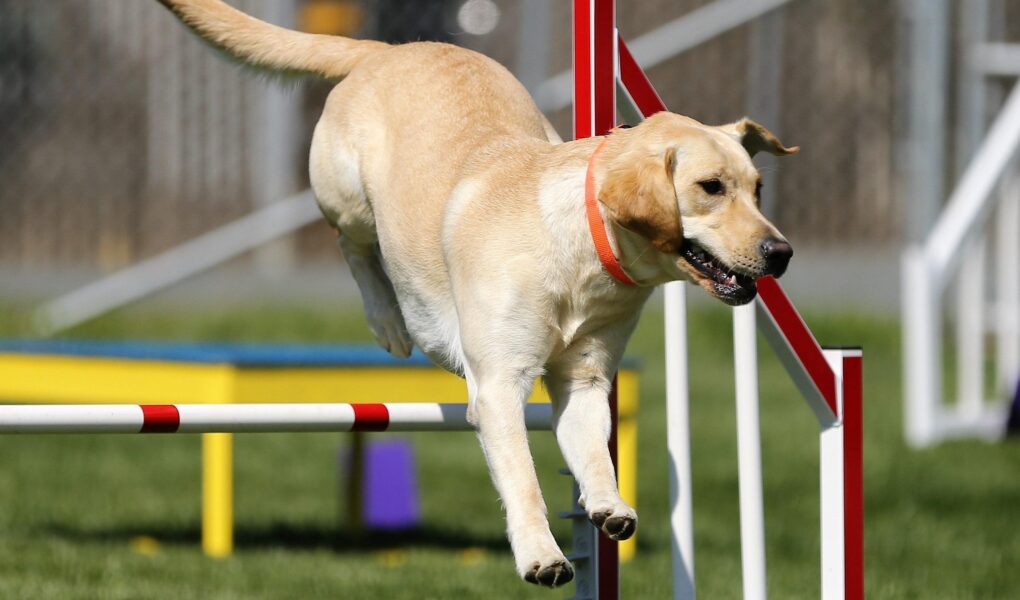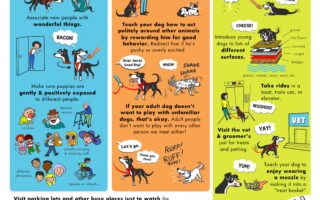Unleashing Fun: Mastering Dog Tricks with Your Furry Companion
Every wagging tail tells a tale, and within each playful bark lies the potential for boundless connection between you and your four-legged friend. Teaching your dog tricks is more than just a way to impress friends or enhance obedience; it’s an enriching experience that fosters trust, communication, and joy between you and your canine companion. Whether you’re a seasoned dog owner or a proud new parent to a curious pup, exploring the world of dog tricks opens the door to a vibrant array of engaging activities that stimulate their mind and strengthen your bond. From the classic sit and shake to the more advanced roll over and play dead, each command is an opportunity for laughter, learning, and lots of tail-wagging fun. In this article, we will dive into a variety of enjoyable and rewarding tricks to teach your dog, offering tips and insights to make the training process as delightful as the results. So, grab some treats, clear a little space, and let’s embark on this pawsitively exciting journey!
Table of Contents
- Engaging and Fun Tricks to Enrich Your Dogs Life
- Step-by-Step Guides for Teaching Essential Commands
- Enhancing Bonding Through Trick Training Activities
- Common Mistakes to Avoid for Successful Learning
- Q&A
- Concluding Remarks
Engaging and Fun Tricks to Enrich Your Dogs Life
Teaching your dog new tricks is not only a great way to stimulate their mind, but it’s also an opportunity for bonding. Here are some engaging activities that will enrich your dog’s life while keeping the training sessions fun and interactive:
- Hide and Seek: A classic game that encourages your dog to use their sense of smell and retrieval skills. Start by having your dog stay while you find a hiding spot, then call them to come find you.
- Obstacle Course: Create a mini obstacle course using everyday items like chairs, cones, or hula hoops. This activity builds agility and obedience, keeping your dog physically active.
- Fetch with a Twist: Instead of just tossing a ball, throw different objects for your dog to fetch. Use varied shapes, sizes, and textures to make the game more interesting.
- Shell Game: Use three cups to hide a treat under one of them. Shuffle them around and let your dog figure out which one has the treat. This enhances problem-solving skills!
Training your dog can also include some fun and light-hearted tricks that impress family and friends. Consider teaching them:
| Trick | Description |
|---|---|
| Roll Over | Encourage your dog to lie down, then gently guide them to roll over using a treat. |
| Paw Shake | Teach your dog to lift their paw and shake it as if they’re greeting someone. |
| Play Dead | Use a command like ”bang!” to have your dog fall over dramatically. |
| Spin | Use a treat to guide your dog in a circle, rewarding them for completing the spin. |
Step-by-Step Guides for Teaching Essential Commands
Teaching your dog essential commands is a rewarding experience for both you and your furry friend. Begin with simple commands such as “Sit,” “Stay,” and “Come.” Use a calm voice and consistent hand signals to reinforce your commands. For “Sit,” hold a treat above your dog’s nose and slowly move it back over their head. This will encourage them to lower their bottom to the ground. When they sit, praise them enthusiastically and give them the treat. For “Stay,” have your dog sit, then take a step back while holding your palm towards them. If they remain in position, return to them, offer praise, and gradually increase your distance.
Once your dog has mastered the basics, progress to more advanced commands like “Roll Over” and “Shake.” For “Roll Over,” have your dog lie down and gently guide them into a roll with a treat. Use the word “Roll” each time you practice to create an association. For “Shake,” gently lift one of their paws while saying “Shake” and reward them. Repeat this exercise until your dog offers their paw on command. Remember, patience and positivity are key components in training. Celebrate small victories to keep your dog motivated and engaged!
Enhancing Bonding Through Trick Training Activities
Engaging in trick training with your dog not only serves as a delightful way to refine their skills but also strengthens the emotional connection between you and your furry friend. By dedicating time to such activities, you’re creating a shared experience that fosters trust and understanding. Each successful trick reinforces positive reinforcement, ultimately leading to a happier and more obedient companion. Consider incorporating tricks that appeal to your dog’s natural behaviors; for instance, teaching them to fetch specific items or spin on command can be super fun and mentally stimulating.
Explore a variety of enriching activities to keep the learning process exciting. Here are some tricks that can enhance your bond through effective training sessions:
- Shake Hands – A classic trick that encourages interaction.
- Roll Over – Inspires playful engagement.
- Play Dead – A hilarious showstopper that showcases your dog’s personality.
- Weave Between Legs - Encourages closeness and coordination.
Incorporating these tricks into your daily routines not just improves your dog’s skills but brings you both closer together. Remember that the key lies in patience and consistency. Celebrate every small victory in your training sessions—this helps to create a positive feedback loop that enhances trust and companionship.
| Trick | Benefits |
|---|---|
| Shake Hands | Boosts engagement and promotes social skills. |
| Roll Over | Enhances flexibility and playful interaction. |
| Play Dead | Encourages dramatic flair and creative bonding. |
| Weave Between Legs | Builds coordination and trust through closeness. |
Common Mistakes to Avoid for Successful Learning
When embarking on the journey of teaching your dog new tricks, it’s essential to sidestep common pitfalls that can hinder both learning and bonding. One frequent error is skipping the basics. Ensure your dog fully grasps fundamental commands like “sit,” “stay,” and “come” before moving on to more advanced feats. Jumping ahead can lead to confusion and frustration for your furry friend. Additionally, neglecting consistency can derail progress; use the same cues and rewards each time to reinforce learning effectively.
Another mistake to avoid is using negative reinforcement. This approach can create fear and anxiety, which could dissuade your dog from wanting to learn. Instead, focus on positive reinforcement through praise and treats, fostering an environment of encouragement. Furthermore, underestimating patience can also be detrimental. Progress may be slow and uneven, but remember that every step forward is a victory. To help track your dog’s learning, consider using a simple table to note down tricks they’ve mastered and areas needing improvement:
| Trick | Status | Notes |
|---|---|---|
| Sit | Mastered | Reliable with hand signal |
| Roll Over | In Progress | Still hesitant, needs more encouragement |
| Play Dead | Not Started | Plan to introduce next week |
Q&A
Q: What are some fun and engaging tricks I can teach my dog?
A: There’s a whole world of tricks waiting for you and your furry friend! From classic commands like “sit” and “stay” to more advanced feats like “roll over” or “play dead,” the options are endless. You can also try teaching fun tricks like “shake hands,” “spin,” or “fetch a specific toy.” These tricks not only keep your dog mentally stimulated but also strengthen your bond!
Q: How do I start teaching my dog a new trick?
A: Begin with a quiet environment free from distractions. Have some tasty treats on hand as positive reinforcement. Start with simple commands and break the trick down into smaller, manageable steps. Use consistent cues and patiently lead your dog through the process. Remember, practice makes perfect, and a good sense of humor goes a long way!
Q: How can I ensure my dog stays motivated while learning?
A: Keep training sessions short and upbeat—about 5 to 10 minutes is ideal. Use high-value treats that your dog loves, and don’t forget to mix in plenty of praise! If your dog starts to lose interest, take a break or switch to a different trick they enjoy. Enthusiasm and playfulness are key to maintaining their motivation!
Q: What if my dog seems to struggle with a trick?
A: Every dog learns at their own pace! If your dog is struggling, take a step back and simplify the trick. Break it down even further and reward any effort they make towards the desired action. Patience is essential. If frustration sets in, it’s a good idea to take a break and revisit it later.
Q: Are there tricks that can help with my dog’s behavior or training?
A: Absolutely! Training your dog to perform tricks can also reinforce good behavior. Tricks like “leave it” can help with impulse control, while “place” can provide them with a designated spot to relax. Teaching “come” with fun recall games ensures they’re attentive and responsive when called.
Q: How can I incorporate tricks into daily activities?
A: Integrate tricks into your dog’s daily routine to keep things interesting! For example, ask your dog to “sit” before they get their meal or to “shake” before going out for a walk. This elevates ordinary moments into opportunities for training and reinforces learned behaviors in a fun way.
Q: Can teaching tricks benefit my dog’s overall well-being?
A: Definitely! Teaching tricks can provide mental stimulation that reduces boredom and mitigates destructive behaviors. It fosters confidence in your dog as they learn new skills and fosters a strong bond between you two. Plus, it’s an excellent way to keep both you and your dog active and engaged!
Concluding Remarks
As we wrap up our exploration of delightful dog tricks, it’s clear that the bond between you and your furry friend can flourish in surprising ways through these engaging activities. Whether you choose to master the classic sit and stay or venture into the whimsical world of spinning, each trick not only adds a layer of fun to your daily routines but also strengthens your communication and connection with your canine companion. Remember, patience and consistency are key ingredients in this rewarding process. So, gather your treats, embrace the joy of learning together, and watch as your dog transforms into a confident performer, ready to dazzle both friends and family. Happy training, and may your days be filled with wagging tails and triumphant barks!



